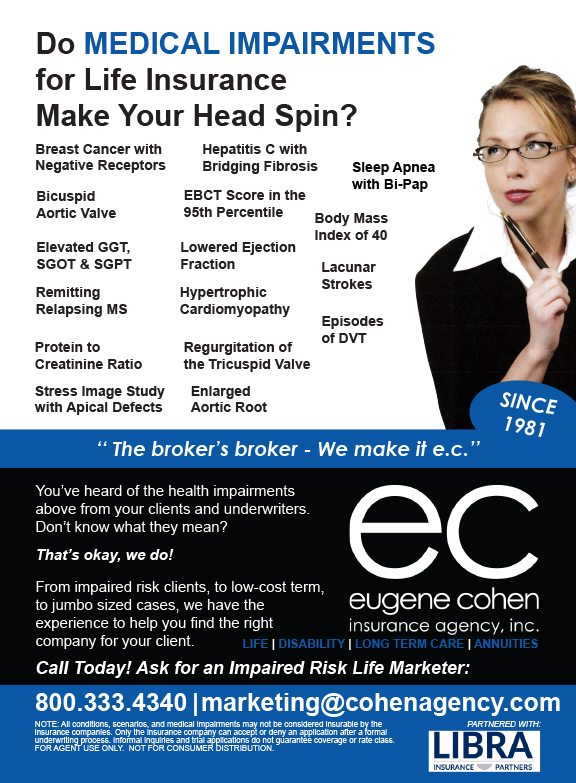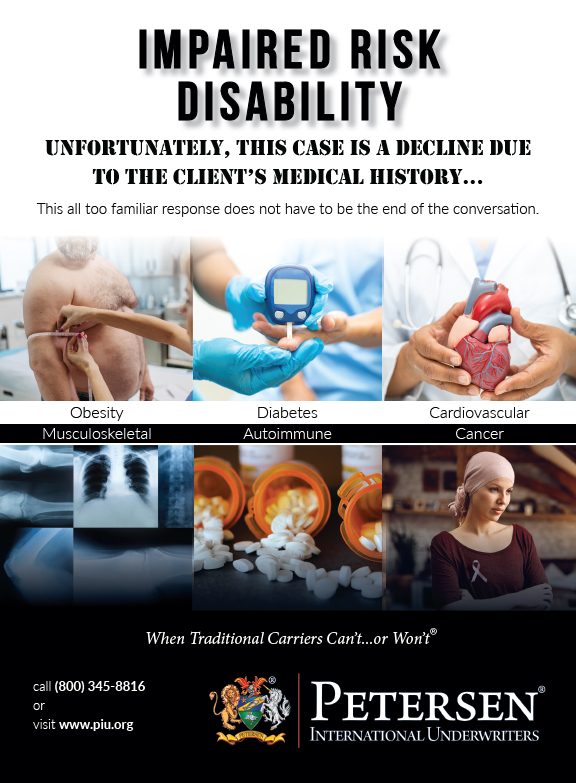Nonalcoholic steatohepatitis (NASH) is a more aggressive form of liver disease. It is inflammatory in nature, is much quicker in disease progression than the standard type and may result in liver cirrhosis and failure. Both in clinical practice and in underwriting, NASH is under-recognized in its incidence. It actually affects up to five percent of the United States population and its prevalence is on the rise.
NASH often goes along with other diseases such as metabolic syndrome, diabetes, obesity and lipid disorders. It’s generally first suspected with abnormalities in liver function tests. More benign causes, such as fatty liver disease, generally cause only mild signs and symptoms over time and it is the secondary disease that causes more of the morbidity. NASH however may have one in five of those affected go on to develop cirrhosis of the liver, and it is predicted to become the number one indication for liver transplant within the next decade. The mortality rate from NASH far exceeds that from fatty liver disease, and certain subtypes have worse outcomes than others.
Most people who are affected with NASH have no symptoms or the ones that do occur are mild (fatigue or mild abdominal pain). Liver function tests are abnormal in many types of fatty liver disease, so additional testing such as a right upper quadrant ultrasound or CT scan may be needed to differentiate the types. Those whose testing shows more marked fatty liver infiltration will go on to have a more aggressive work-up. Since liver biopsy is the only accepted method to reliably identify NASH from uncomplicated disease, it is often the recommended next step.
Biopsies are not without complications however, and their use is somewhat controversial. Bleeding, pain, infection, bile leak and damage to other organs are not infrequently reported. Additionally, not all pathologists read the slides the same way, and an adequate biopsy sample has to be obtained for it to be of any diagnostic use. There is not a magic bullet yet for NASH treatment either, so obtaining the biopsy as a routine part of the fatty liver work-up is not universally accepted.
There is certain testing however that favors the NASH diagnosis over the milder forms of fatty liver disease. Highly elevated ALT levels lean toward the more inflammatory NASH (although normal levels don’t necessarily rule it out). Cytokeratin 18 is another more specific marker but it is not widely commercially available at present. Noninvasive scoring systems that include patient age, body mass index, glucose levels, liver function test ratios, albumin levels and platelet counts correlate with a NAFLD fibrosis score and a fibrosis 4(FIB-4) score. The higher scores lean more to the need for a liver biopsy to assess how aggressive treatment should become.
Treatments are similar for all subtypes of fatty liver disease, but as mentioned are accelerated once a diagnosis of NASH is made. Lifestyle modification is at the top of the list for therapy, and weight loss is a key component for the majority who are overweight. Sadly, that majority isn’t often able to meet weight loss criteria through diet and exercise, and bariatric surgery may become a recommendation. Bariatric surgery is the most effective weight loss therapy and also improves co-morbid conditions. As it is not an uncomplicated procedure though, it is done when conventional attempts at weight loss fail and co-morbids exist. Studies show the surgery has a very beneficial effect on NASH, with regression and sometimes disappearance of the disease on biopsy.
Pharmacotherapy for NASH is a very promising area for pharmacologic research, but no one so far has come up with a medication that has produced consistent clinical trial results. Randomized trials suggest a diabetes medication (pioglitazone) and Vitamin E have had the most favorable results. A second trial with a different diabetes medication (liraglutide) looks promising but the side effects have precluded its universal use in treatment.
NASH types three and four are insurable but often rated. A liver biopsy is a must for consideration, and has to show mild fibrosis for favorable rating. In those where there is bridging fibrosis or cirrhosis, the ratings are very high or a decline. Concurrent use of alcohol worsens the picture and significantly impairs the overall outcome.



























